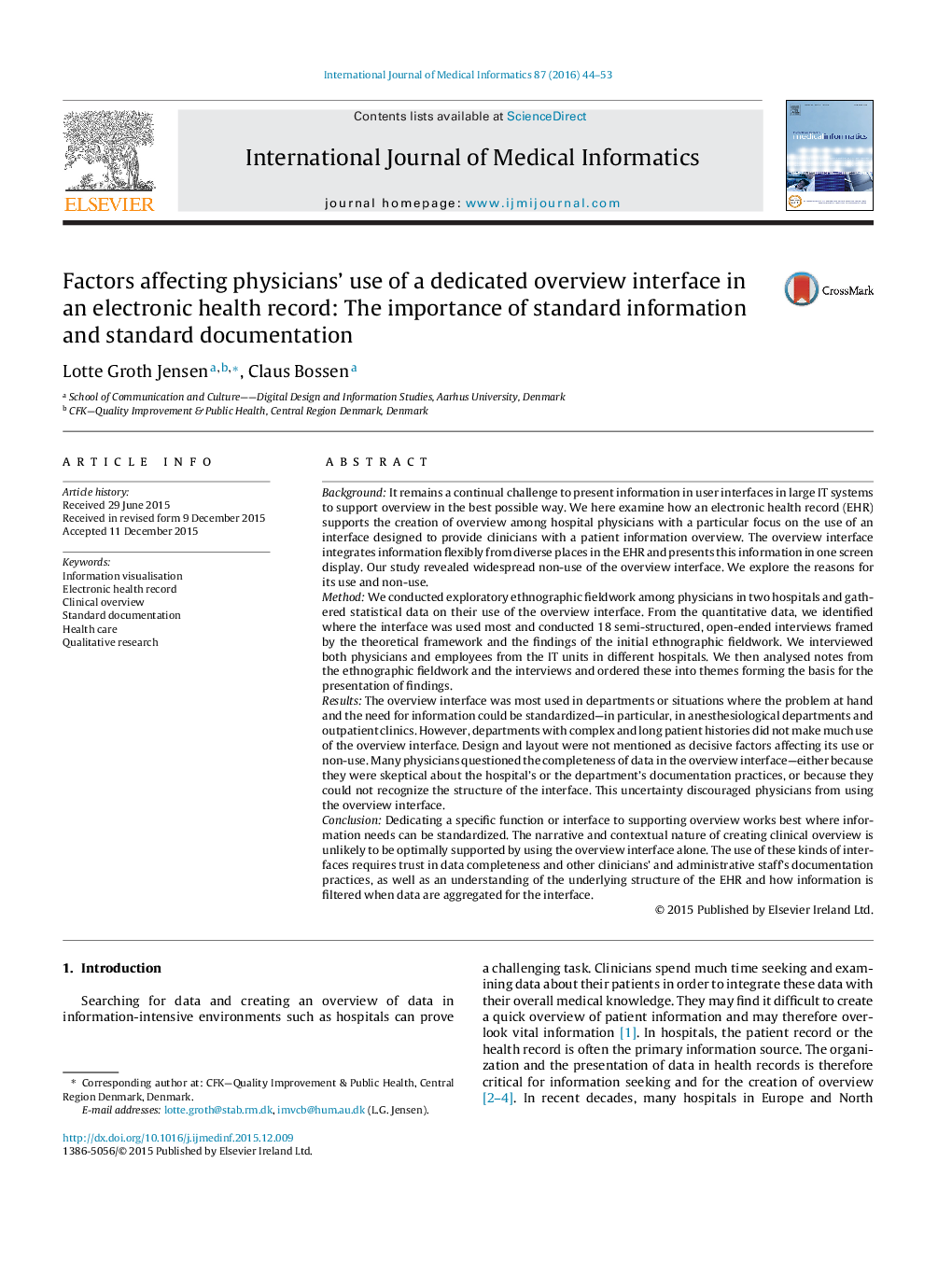| Article ID | Journal | Published Year | Pages | File Type |
|---|---|---|---|---|
| 516706 | International Journal of Medical Informatics | 2016 | 10 Pages |
•We examined the use of an overview interface implemented together with a new EHR.•The use of the overview interface among physicians varied considerable.•Physicians using standard information were frequent users of the overview interface.•Awareness of standard documentation practices are required for trusting the interface.•To trust the interface users need to have acquaintance of the system structure.
BackgroundIt remains a continual challenge to present information in user interfaces in large IT systems to support overview in the best possible way. We here examine how an electronic health record (EHR) supports the creation of overview among hospital physicians with a particular focus on the use of an interface designed to provide clinicians with a patient information overview. The overview interface integrates information flexibly from diverse places in the EHR and presents this information in one screen display. Our study revealed widespread non-use of the overview interface. We explore the reasons for its use and non-use.MethodWe conducted exploratory ethnographic fieldwork among physicians in two hospitals and gathered statistical data on their use of the overview interface. From the quantitative data, we identified where the interface was used most and conducted 18 semi-structured, open-ended interviews framed by the theoretical framework and the findings of the initial ethnographic fieldwork. We interviewed both physicians and employees from the IT units in different hospitals. We then analysed notes from the ethnographic fieldwork and the interviews and ordered these into themes forming the basis for the presentation of findings.ResultsThe overview interface was most used in departments or situations where the problem at hand and the need for information could be standardized—in particular, in anesthesiological departments and outpatient clinics. However, departments with complex and long patient histories did not make much use of the overview interface. Design and layout were not mentioned as decisive factors affecting its use or non-use. Many physicians questioned the completeness of data in the overview interface—either because they were skeptical about the hospital’s or the department’s documentation practices, or because they could not recognize the structure of the interface. This uncertainty discouraged physicians from using the overview interface.ConclusionDedicating a specific function or interface to supporting overview works best where information needs can be standardized. The narrative and contextual nature of creating clinical overview is unlikely to be optimally supported by using the overview interface alone. The use of these kinds of interfaces requires trust in data completeness and other clinicians' and administrative staff's documentation practices, as well as an understanding of the underlying structure of the EHR and how information is filtered when data are aggregated for the interface.
